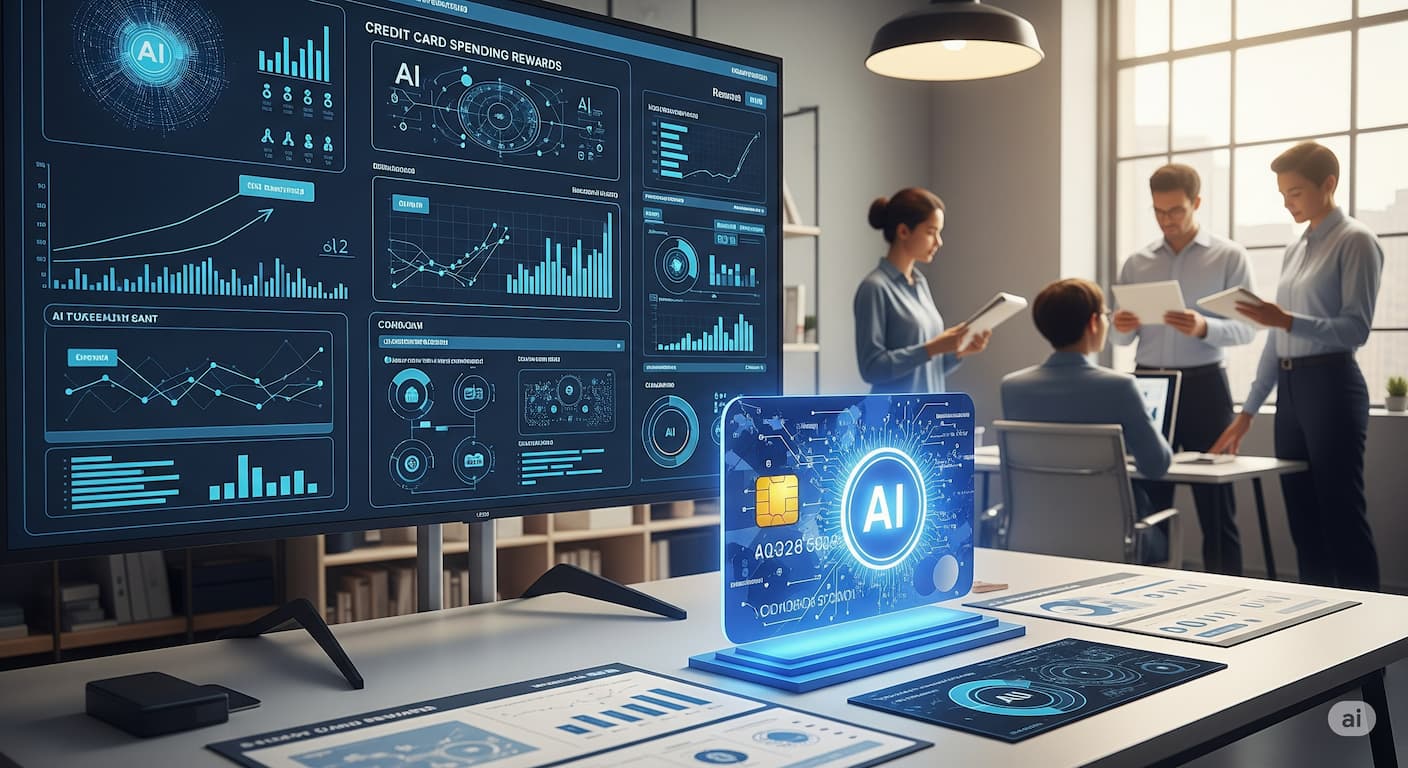- What Happened in the Coca-Cola Data Leak?
- Who Was Affected by the Coca-Cola Data Breach?
- How Did the Hackers Gain Access to Coca-Cola’s Internal Systems?
- Ransomware Explained: What It Is and Why Attacks Are Growing in 2025
- What Coca-Cola’s Refusal to Pay the Ransom Signals to Other Companies
- What You Should Do If Your Data Was Leaked
- The Bigger Picture: How Safe Is Your Personal Data in 2025?
- Data Breach Laws: How the US, UK, Australia, and More Handle Corporate Leaks
- Coca-Cola’s Cybersecurity Measures: What Went Wrong & What Happens Next
- Protecting Yourself: Best Practices to Safeguard Your Digital Footprint
- 1. Use Strong, Unique Passwords for Every Account
- 2. Enable Multi-Factor Authentication (MFA)
- 3. Learn to Spot Phishing and Social Engineering
- 4. Regularly Monitor Your Financial and Online Activity
- 5. Invest in Personal Cybersecurity Tools
- 6. Educate Your Family & Team Members
- 7. Limit the Data You Share by Default
- FAQs, Glossary & Recommended Resources for Data Breach Victims
- Frequently Asked Questions (FAQs)
- Quick Glossary
- Trusted Tools & Resources
What Happened in the Coca-Cola Data Leak?
In early 2025, Coca-Cola became the latest victim in a growing wave of high-profile ransomware attacks. A notorious cybercriminal group reportedly infiltrated the company’s internal systems and exfiltrated sensitive employee data. When Coca-Cola refused to meet the ransom demands, the hackers followed through on their threat—leaking passport scans, national IDs, employment records, and other personal information belonging to over 950 employees.
Key Facts at a Glance:
- Date of Incident: January 2025
- Company Affected: Coca-Cola (global operations, breach reportedly originated via a regional server)
- Attacker: A ransomware group known as “Stormous” (or a similar alias under investigation)
- Ransom Demand: Unconfirmed, but believed to be in the six to seven-figure USD range
- Leaked Data: Includes passport scans, IDs, email addresses, HR records, and internal memos
Why This Attack Matters
While ransomware isn’t new, this breach stands out for two key reasons:
- Global Employee Exposure: The leak didn’t just affect a local office—employees from multiple countries including the U.S., UK, Australia, and Canada were impacted.
- Company Response: Coca-Cola took a firm stance by refusing to pay the ransom, despite the risk of public data release—a move that sparked both praise and criticism in cybersecurity circles.
Coca-Cola’s Official Response
The company issued a statement acknowledging the breach, stating:
“We are actively investigating the situation with law enforcement and cybersecurity experts. Protecting our people is our highest priority.”
However, many critics argue that Coca-Cola was unprepared for such a sophisticated attack—raising concerns about cybersecurity readiness across the FMCG (fast-moving consumer goods) sector.

Who Was Affected by the Coca-Cola Data Breach?
The Coca-Cola ransomware attack didn’t just compromise internal systems—it directly impacted the lives of hundreds of employees across multiple countries. With over 950 individuals affected, the breach revealed deep personal data, raising serious concerns about identity theft, fraud, and long-term reputational harm.
Global Employee Exposure: A Multinational Crisis
According to initial reports and leaked screenshots on dark web forums, the exposed individuals included staff from:
- United States
- Canada
- United Kingdom
- Australia
- Singapore
- New Zealand
- Germany and other EU member states
This broad international exposure made it one of the most globally dispersed corporate data leaks in recent years.
What Types of Data Were Leaked?
The stolen data wasn’t limited to generic emails—it included:
- Scanned passports and government-issued IDs
- Employee contracts and salary information
- Tax ID numbers and social security data (where applicable)
- Internal HR communications and contact details
- Personal phone numbers, addresses, and emergency contacts
In some cases, entire employee files were leaked in PDF or ZIP folders.
Why This Type of Data Is So Dangerous
This kind of highly sensitive data enables criminals to:
- Open fraudulent credit accounts
- Commit identity theft or impersonation
- Launch phishing attacks targeting employees and their families
- Sell the data in underground marketplaces
If you’re an employee or associate who may be impacted, it’s critical to monitor your credit reports, change passwords, and report suspicious activity immediately.
Real-World Impacts
Some affected staff in Canada and the UK have reportedly:
- Received phishing emails posing as Coca-Cola HR
- Found their data listed on dark web forums
- Had to freeze their credit to prevent fraudulent activity
How Did the Hackers Gain Access to Coca-Cola’s Internal Systems?
While Coca-Cola has not released full technical details of the breach, early cybersecurity analysis suggests that the attackers likely exploited a combination of social engineering, credential theft, and unpatched security flaws—a common trifecta in modern ransomware campaigns.
Suspected Entry Point: Phishing and Credential Compromise
Most cybersecurity experts believe the attackers gained initial access through a phishing email targeting Coca-Cola employees, likely in a regional office with weaker endpoint security.
Once an unsuspecting staff member clicked a malicious link or downloaded an infected attachment, the attackers may have:
- Harvested login credentials
- Bypassed multi-factor authentication (if not enabled)
- Gained access to internal systems or cloud storage
This “human vulnerability” is still the #1 cause of data breaches globally—even in large corporations with strong firewalls and antivirus software.
Potential Exploited Vulnerabilities (Unconfirmed)
Industry insiders suspect the hackers may have used one or more of the following techniques:
- Exploitation of outdated VPN software
- Weak internal password policies or shared credentials
- Unpatched Microsoft Exchange vulnerabilities
- Access to cloud storage buckets (e.g., AWS, Azure) with misconfigured permissions
These entry points are all well-documented exploits used by ransomware groups such as LockBit, Stormous, and Hive in past breaches.
Why This Could Have Been Prevented
Most experts agree that basic cybersecurity hygiene could have stopped or limited the attack:
- Up-to-date security patches
- Company-wide phishing awareness training
- Enforced multi-factor authentication (MFA)
- Endpoint detection and response (EDR) tools
Coca-Cola’s lack of transparency about their security protocols has raised eyebrows, especially as ransomware threats are escalating in both scale and sophistication in 2025.
A Pattern Repeating Across Industries
This breach reflects a disturbing pattern: Global brands are being targeted not just for consumer data, but for employee files—a more personal and devastating form of cybercrime.
Ransomware Explained: What It Is and Why Attacks Are Growing in 2025
To understand what happened to Coca-Cola—and why no organization is truly safe—you first need to understand the rising threat of ransomware. It’s no longer just a hacker’s game; it’s a billion-dollar industry run by highly organized cybercrime syndicates.
What Is Ransomware?
Ransomware is a type of malicious software that infiltrates a system, encrypts the victim’s data, and demands payment (usually in cryptocurrency) in exchange for the decryption key.
If the victim refuses to pay:
- The data is either sold, leaked, or both
- The attackers may dox the company publicly
- In some cases, they destroy the data altogether
This is exactly what happened in the Coca-Cola case—except with a twist: the hackers targeted employee data, not just financial or customer records.
Why Ransomware Attacks Are Increasing in 2025
Several global trends are fueling this spike:
- Remote and hybrid work has increased vulnerability to phishing and network intrusions.
- More digital transformation means more data, more endpoints, and more exposure.
- Ransomware-as-a-Service (RaaS) platforms make it easy for even low-level criminals to launch advanced attacks.
- Many companies still lack proper security infrastructure or employee training.
Types of Ransomware Attacks in Use Today
| Type | Description |
| Encrypting Ransomware | Locks files and demands payment to restore access (e.g., LockBit, Maze) |
| Leakware / Doxware | Threatens to leak sensitive info if ransom isn’t paid (as in Coca-Cola case) |
| Double Extortion | Encrypts AND leaks stolen data unless paid twice |
| Targeted Ransomware | Attacks tailored to a company’s vulnerabilities and internal systems |
Coca-Cola’s Case: A Classic Leakware Strategy
The cybercriminal group in this case exfiltrated sensitive employee data, then threatened to leak it when their demands were refused. Coca-Cola’s refusal to pay marked a bold stance—but it also triggered the full public release of the data, causing significant reputational damage.
The Cost of Not Paying a Ransom
While paying a ransom is ethically controversial, refusing to pay doesn’t mean zero cost. Companies risk:
- Legal consequences for failing to protect data
- Employee backlash and lawsuits
- Investor concerns and falling stock value
- PR crises and long-term trust issues
What Coca-Cola’s Refusal to Pay the Ransom Signals to Other Companies
When Coca-Cola refused to pay the ransom demanded by the hackers, it sent a strong—and risky—message to the global business community: We won’t negotiate with cybercriminals. This bold stance aligns with advice from many law enforcement agencies, but it also comes with high-stakes consequences.
Let’s break down what this decision really means for corporations, cybersecurity leaders, and employee trust in 2025.
The Ethics Behind “Don’t Pay the Ransom”
Most government agencies—including the FBI, UK’s NCSC, and Australia’s ACSC—recommend not paying ransoms. Why?
- It funds criminal enterprises
- There’s no guarantee data will be deleted
- It may make the company a repeat target
- It sends a signal that extortion will not be rewarded
By refusing to pay, Coca-Cola upheld a globally supported policy stance, which some see as an act of digital courage.
But Refusal Isn’t Without Fallout
Here’s what Coca-Cola risked (and experienced):
- Public release of over 950 employee records
- Long-term reputational damage
- Potential lawsuits and employee complaints
- Loss of trust, especially in HR and IT departments
- Negative headlines in every major market
So while the company took a principled position, the employees bore the brunt of the consequences—raising questions about where ethical cybersecurity ends and corporate responsibility begins.
What Other Companies Can Learn
- Have a data breach response plan in place.
- Communicate transparently with staff—don’t let them learn about leaks from the news.
- Invest in breach insurance to absorb the cost of legal and remediation fees.
- Know your data inventory: Where is your most sensitive information stored, and who has access?
- Test your ransomware response plan quarterly—especially for companies handling personal data.
Leadership Insight: Risk vs. Responsibility
Coca-Cola’s case highlights a tough reality:
“Doing the right thing” (not paying) may still have very real consequences—especially if you haven’t proactively secured and segmented sensitive data in the first place.
What You Should Do If Your Data Was Leaked
If you’re one of the 950+ Coca-Cola employees—or part of any data breach in 2025—don’t panic, but act fast. Personal data leaks like passport scans, national IDs, and HR files can expose you to identity theft, fraud, and long-term credit damage.
Here’s a step-by-step recovery plan to help protect yourself if your data was compromised.
1. Find Out What Was Leaked
Check official company communications and cybersecurity advisories to confirm:
- Was it just your email address?
- Or did the leak include passports, tax numbers, addresses, or contracts?
If your passport, ID card, or national insurance number was involved, you are at high risk of identity misuse.
2. Immediately Freeze or Monitor Your Credit
Depending on your country of residence, take the following actions:
- USA: Use Equifax, Experian, or TransUnion to freeze credit
- UK: Sign up for alerts with Experian or CheckMyFile
- Canada: Contact TransUnion Canada and Equifax Canada
- Australia/NZ: Request credit freezes via Equifax or Illion
- Singapore: Enable monitoring through Credit Bureau Singapore
Many services offer free alerts for 12–24 months after a breach. Take advantage.
3. Change Passwords and Enable MFA
Update all passwords—especially for:
- Work email or apps
- Online banking
- Cloud storage
- Government ID or health portals
Enable Multi-Factor Authentication (MFA) everywhere possible. If attackers got access to HR portals, they may attempt credential stuffing across accounts.
4. Report Identity Theft or Fraud Attempts
If you notice:
- Unfamiliar transactions
- Credit checks you didn’t authorize
- Fake emails or phishing calls
Report immediately to your bank, local police, or national cybersecurity hotline.
In some jurisdictions (like the U.S. or UK), you can file an Identity Theft Report or Action Fraud alert to trigger a formal investigation and protect your credit record.
5. Use a Digital Identity Protection Tool
Consider signing up for services like:
- Norton LifeLock
- Bitdefender Identity Theft Protection
- Aura
- ID Watchdog
They monitor dark web leaks, unauthorized activity, and even offer insurance coverage for expenses related to fraud.
Pro Tip: Stay Alert for Months
The effects of a data leak may not be immediate. Stay vigilant for 6–12 months, as stolen info can circulate in black markets before being misused.
The Bigger Picture: How Safe Is Your Personal Data in 2025?
The Coca-Cola data leak isn’t just a headline—it’s a symptom of a much larger and growing problem: data vulnerability in the digital age. With more personal information stored online than ever before, 2025 is shaping up to be the most dangerous year yet for identity theft and corporate cyberattacks.
Data Breaches Are Becoming the New Normal
According to recent cybersecurity reports:
- 1 in 3 global companies suffered a data breach in the last 12 months
- Over 6.4 billion personal records were leaked in Q1 of 2025 alone
- Employee records (not just customer data) are now prime targets for hackers
This means even if you don’t work in finance or tech, your digital identity is still at risk—simply by being on payroll or using cloud-based HR platforms.
What Makes Personal Data So Valuable?
Cybercriminals prefer personal records like those leaked from Coca-Cola because:
- Passport scans = High resale value on dark web
- Tax IDs & employment info = Identity fraud and false benefit claims
- Work emails = Gateway to phishing or BEC (Business Email Compromise)
Your identity is more valuable than your bank login—and companies aren’t always equipped to protect it.
Why Even Big Brands Are Vulnerable
You might think global corporations like Coca-Cola have airtight security—but many still struggle with:
- Legacy systems not built for modern threats
- Slow adoption of zero-trust frameworks
- Underinvested cybersecurity departments
- Inconsistent training for employees
As one cybersecurity expert recently put it:
“It’s not a question of if you’ll be breached—it’s when. The winners are the ones prepared for the fallout.”
Are Governments Doing Enough?
Many countries are catching up with stricter regulations:
- UK’s ICO and EU’s GDPR impose fines for failure to report breaches
- Singapore’s PDPA was recently updated to mandate faster reporting
- Australia’s Privacy Act reforms include major penalties for poor security
Still, enforcement is spotty, and many companies treat data protection as a checkbox exercise—until a breach happens.
Bottom Line: Privacy Is No Longer a Passive Right
In 2025, protecting your data isn’t just your company’s job—it’s yours too.
Whether you’re an employee, freelancer, or consumer:
- Use password managers
- Limit the personal data you share with platforms
- Opt for secure cloud services
- Stay alert to scams, even if they look “official”
Data Breach Laws: How the US, UK, Australia, and More Handle Corporate Leaks
In a world where data breaches like the Coca-Cola incident are becoming more frequent, the question arises: What happens next—legally? Depending on the country, a company that mishandles sensitive data can face hefty fines, lawsuits, and serious reputational fallout.
Let’s break down how leading high-CPM countries are responding to corporate data leaks in 2025.
United States: Patchwork Protections & Class Actions
- No single federal privacy law, but states like California, Colorado, and Virginia have enacted strong protections (e.g., CPRA).
- Companies are required to notify affected users “without unreasonable delay.”
- Victims can join class action lawsuits—especially when personal data like SSNs or financial info is involved.
In Coca-Cola’s case, U.S. employees may pursue legal recourse if their data was used for fraud.
United Kingdom: Strict GDPR-Style Enforcement
- Governed by UK GDPR and the Data Protection Act 2018.
- Companies must report serious breaches to the ICO (Information Commissioner’s Office) within 72 hours.
- Fines can reach up to £17.5 million or 4% of global turnover, whichever is higher.
If Coca-Cola failed to notify UK staff promptly, they could face an official investigation.
Australia: Big Reforms and Bigger Penalties
- Following major 2023 breaches, Australia overhauled its Privacy Act.
- Companies must report breaches under the Notifiable Data Breaches (NDB) scheme.
- Maximum fines now exceed $50 million AUD for serious or repeated violations.
Australian employees affected by the Coca-Cola breach may be eligible for government-backed ID protection support.
Canada: Privacy Reform in Progress
- Canada’s existing law (PIPEDA) requires breach notification and record-keeping.
- New legislation (Bill C-27: CPPA) aims to introduce tougher rules, including:
- Mandatory breach reporting
- Consumer rights to data portability and erasure
- Increased fines for non-compliance
Coca-Cola’s Canadian operations could face scrutiny under both current and upcoming laws.
Singapore: Fast and Firm Penalties
- Governed by the Personal Data Protection Act (PDPA).
- Mandatory breach notification within 3 days of becoming aware.
- Fines can reach S$1 million or 10% of annual turnover (whichever is higher).
Singapore’s PDPC is known for swift enforcement, especially when cross-border employee data is involved.
What About the EU (GDPR)?
If Coca-Cola has employees or servers in the EU, it falls under GDPR jurisdiction:
- Breach must be reported within 72 hours
- Fines can exceed €20 million or 4% of annual global revenue
GDPR applies regardless of where the company is based, as long as EU citizens or residents are affected.
Summary Table: Global Breach Law Comparison
| Country | Breach Reporting Window | Max Penalty | Victim Protections |
| USA | Varies by state | $2500–$7500 per user (varies) | Class action rights, credit monitoring |
| UK | 72 hours | £17.5M or 4% of global revenue | ICO investigations, legal recourse |
| Australia | “As soon as practicable” | AUD 50M+ | Government ID protection |
| Canada | “As soon as feasible” | Up to CAD 10M+ (proposed) | CPPA will offer more rights |
| Singapore | 3 days | S$1M or 10% turnover | Rapid enforcement, cross-border coverage |
| EU | 72 hours | €20M or 4% turnover | Full GDPR protections |
Coca-Cola’s Cybersecurity Measures: What Went Wrong & What Happens Next
Coca-Cola is one of the most recognized brands in the world—but the 2025 data breach showed that even household names aren’t immune to cybersecurity failures. While the company has not released detailed post-breach findings, analysts and industry insiders are already pointing to gaps in security protocols, poor risk mitigation, and delayed response efforts.
Let’s break down what may have gone wrong—and what Coca-Cola (and others) must do now.
Where Coca-Cola’s Security May Have Failed
Although the full attack vector hasn’t been officially disclosed, cybersecurity experts believe the following weaknesses contributed to the breach:
- Lack of Zero-Trust Architecture
Traditional perimeter defenses are no longer enough. Zero-trust frameworks that authenticate every device and user may not have been in place. - Inadequate Employee Phishing Training
The attack likely began with a phishing email—a sign of insufficient ongoing security education among staff. - Delayed Detection & Response
Many ransomware attacks are preventable if flagged early. If Coca-Cola lacked real-time threat detection (EDR/XDR), the attackers may have had days or weeks of unnoticed access. - Unpatched Systems or Legacy Software
Like many global firms, Coca-Cola may still rely on older infrastructure—ripe for exploitation through known vulnerabilities.
Why Big Brands Often Miss Basic Cyber Hygiene
Even corporations with billion-dollar budgets can fall short because:
- Cybersecurity budgets are often under-prioritized
- IT teams are overstretched across global offices
- C-suite leaders may lack technical understanding
- Focus remains on revenue, not resilience—until it’s too late
What Coca-Cola Is Likely Doing Post-Breach
While Coca-Cola’s public response has been minimal, they are likely:
- Conducting a full forensic investigation
- Cooperating with international cybercrime agencies
- Reassessing vendor access, VPNs, and cloud architecture
- Rolling out company-wide security awareness programs
- Reviewing incident response plans and data governance policies
They may also increase cybersecurity insurance coverage, especially for HR and sensitive employee data.
Lessons for Other Companies
- Don’t assume brand power equals immunity
- Invest in proactive defenses, not just reaction plans
- Encrypt and segment sensitive employee data by default
- Conduct quarterly breach simulations
- Treat cybersecurity as a boardroom issue, not just an IT problem
As one CSO put it after the breach:
“You’re either spending on cybersecurity now—or paying for a breach later.”
Protecting Yourself: Best Practices to Safeguard Your Digital Footprint
In today’s hyper-connected world, your personal data is constantly at risk—whether you work for a global brand like Coca-Cola or not. While you can’t control how corporations handle your data, you can take proactive steps to protect yourself from identity theft, fraud, and cybercrime.
Here are proven digital hygiene habits that can help you stay safe in 2025 and beyond.
1. Use Strong, Unique Passwords for Every Account
Reusing passwords across platforms is one of the fastest ways hackers can move from one breach (like Coca-Cola’s) to your personal life.
Use a password manager (e.g., 1Password, Bitwarden, or Dashlane) to:
- Generate complex passwords
- Store them securely
- Auto-fill login fields safely
2. Enable Multi-Factor Authentication (MFA)
MFA adds a second layer of protection—usually a one-time code or app-based approval—even if your password gets stolen.
Enable MFA on:
- Email accounts
- Bank apps
- Cloud storage (Google Drive, iCloud, Dropbox)
- Social media profiles
3. Learn to Spot Phishing and Social Engineering
Most cyberattacks begin with human error. Train yourself to recognize:
- Suspicious emails or texts
- Fake login pages
- Urgent requests for private info
- Unusual file attachments
Never click links from unknown senders—even if they claim to be your boss, HR, or bank.
4. Regularly Monitor Your Financial and Online Activity
- Check your credit reports at least twice a year
- Set up transaction alerts from your bank
- Use tools like HaveIBeenPwned to check if your email has been exposed
- Scan your devices monthly for malware
5. Invest in Personal Cybersecurity Tools
While many tools have free tiers, upgrading is worth it for better protection:
- VPNs (NordVPN, Surfshark) for encrypted browsing
- Identity protection tools like Norton LifeLock or Aura
- Dark web monitoring services for real-time alerts
6. Educate Your Family & Team Members
Cyber hygiene isn’t just a solo responsibility. Teach your kids, coworkers, and elderly relatives how to:
- Identify fake links
- Avoid oversharing personal data online
- Back up important files offline
Hackers often target less tech-savvy individuals in your network to get to you.
7. Limit the Data You Share by Default
Before submitting information:
- Ask if it’s absolutely necessary
- Read the privacy policy (or skim for key terms)
- Opt out of data sharing whenever possible
The less data companies collect, the less they can leak.
FAQs, Glossary & Recommended Resources for Data Breach Victims
To wrap up this guide on the Coca-Cola data leak and your personal data protection in 2025, here’s a helpful section with frequently asked questions, a mini-glossary for clarity, and trusted tools and resources to protect yourself moving forward.
Frequently Asked Questions (FAQs)
What kind of data was leaked in the Coca-Cola breach?
Leaked data reportedly includes passport scans, national ID cards, tax documents, HR files, contact details, and email credentials of over 950 employees worldwide.
Should I be worried if I’ve never worked at Coca-Cola?
Yes—this breach is a wake-up call for anyone whose data is stored with large companies. It highlights how even non-financial firms are vulnerable to ransomware attacks.
Will affected employees be compensated?
This depends on local laws. In some countries (e.g., UK, Australia), employees can file complaints or join legal action if harm is proven.
Is it ever safe to pay a ransom?
Cybersecurity experts and governments strongly discourage paying ransoms, as it funds criminal activity and provides no guarantee of data recovery.
Quick Glossary
| Term | Meaning |
| Ransomware | Malware that locks or steals data and demands payment for its return |
| Leakware | A type of ransomware that leaks stolen data if ransom isn’t paid |
| Phishing | Fake communications (email, SMS) designed to steal login credentials |
| Zero-Trust | A security model that verifies all users, even inside a network |
| EDR/XDR | Tools for real-time detection and response to endpoint threats |
| MFA | Multi-Factor Authentication – a second layer of login security |
| Dark Web | Part of the internet where stolen data is often traded |
Trusted Tools & Resources
Identity Protection
- Aura Identity Theft Protection
- LifeLock by Norton
- ID Watchdog
Credit Monitoring
- Credit Karma (US/Canada)
- CheckMyFile (UK)
- Credit Bureau Singapore
Dark Web Scan
- Have I Been Pwned
- Firefox Monitor
Cybersecurity Tools
- Bitwarden Password Manager
- NordVPN
- ProtonMail (Encrypted Email)
Final Thought
The Coca-Cola data leak may be one of the biggest employee-targeted cyberattacks in recent memory—but it’s far from the last. Whether you’re an employee, executive, or everyday user, protecting your digital identity in 2025 is not optional—it’s your first line of defense.



